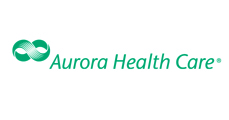Why an effective drug-screening program should be a top priority for all employers
Why an effective drug-screening program should be a top priority for all employers Dr. Mary Jo Capodice
Dr. Mary Jo Capodice
The numbers are staggering:
• Drug usage costs employers an estimated $75 billion and $100 billion each year in lost time, accidents, health care and worker’s compensation.
1
• Employees with substance use issues cost employers an average of $7,000 annually.
2
• 65 percent of all accidents on the job are related to drugs or alcohol.
2
• Employees who abuse substances cause 40 percent of on the job injuries.
2
• Nearly 75 percent of all adult illicit drug users are employed.
3
While employers big and small may wonder if drug screening is appropriate for them, the numbers alone provide a convincing argument for effective drug screening programs. The cost-savings can be significant and the numerous other benefits, for employers of all sizes, cannot be ignored.
There are two types of screening programs: pre-placement screening and reasonable cause screening. Both can be effective in creating a safe work environment. Employers who require pre-employment drug screening send a message that safety and sobriety are taken seriously and provide incentive for prospective job applicants and even current employees to lead healthy lifestyles that won’t compromise workplace performance or safety. Programs that include post-accident and random testing of employees also help to ensure you’re getting the best out of your employees at all times.
In Wisconsin, there currently is no general or comprehensive drug testing law that prohibits or regulates drug testing. Testing can include hair collection screening, urine screening and breath alcohol screening. While pre-employment drug screening is typically part of a comprehensive pre-placement exam, the drug screen results are reported to the employer independent of the physical exam. Wisconsin employers can require pre-employment and ongoing drug screenings provided that state laws against discrimination are obeyed, and proper handling protocols are followed for all sample specimens - to avoid any inaccuracy or error in results.
When developing pre-placement screening protocols, the following steps must be taken:
• Applicants must be notified that drug screening is part of the employment process and agreement to undergoing screening must be provided in writing before the test is conducted;
• Employment with the organization must be formally offered and contingent on passing the drug screening; and
• All applicants for the same job must be tested similarly with screenings conducted by a state-certified testing lab.
While many companies are slow to develop drug screening protocol, an effective program can be an invaluable tool to employers who are committed to creating a safe, efficient work environment, encouraging and maintaining a healthy workforce and promoting cost-savings. It is a decision you won't regret.
[1] How Illicit Drug Use Affects Business and the Economy, U.S. Department of Labor, May 2011.
2 Substance Abuse and Mental Health Services Administration (SAMHSA), Office of Applied Studies (OAS), National Survey on Drug Use and Health 2005 and 2006, Table 5.8A, Rockville, MD: 2007.
3 National Survey on Drug Use and Health, US Department of Health and Human Services, 2013.
Dr. Mary Jo Capodice is the Systems Medical Director for Aurora Occupational Health and Wellness, part of Aurora Employer Solutions. To learn more, visit AuroraEmployerSolutions.org
